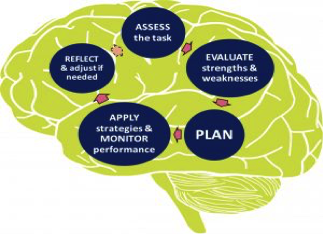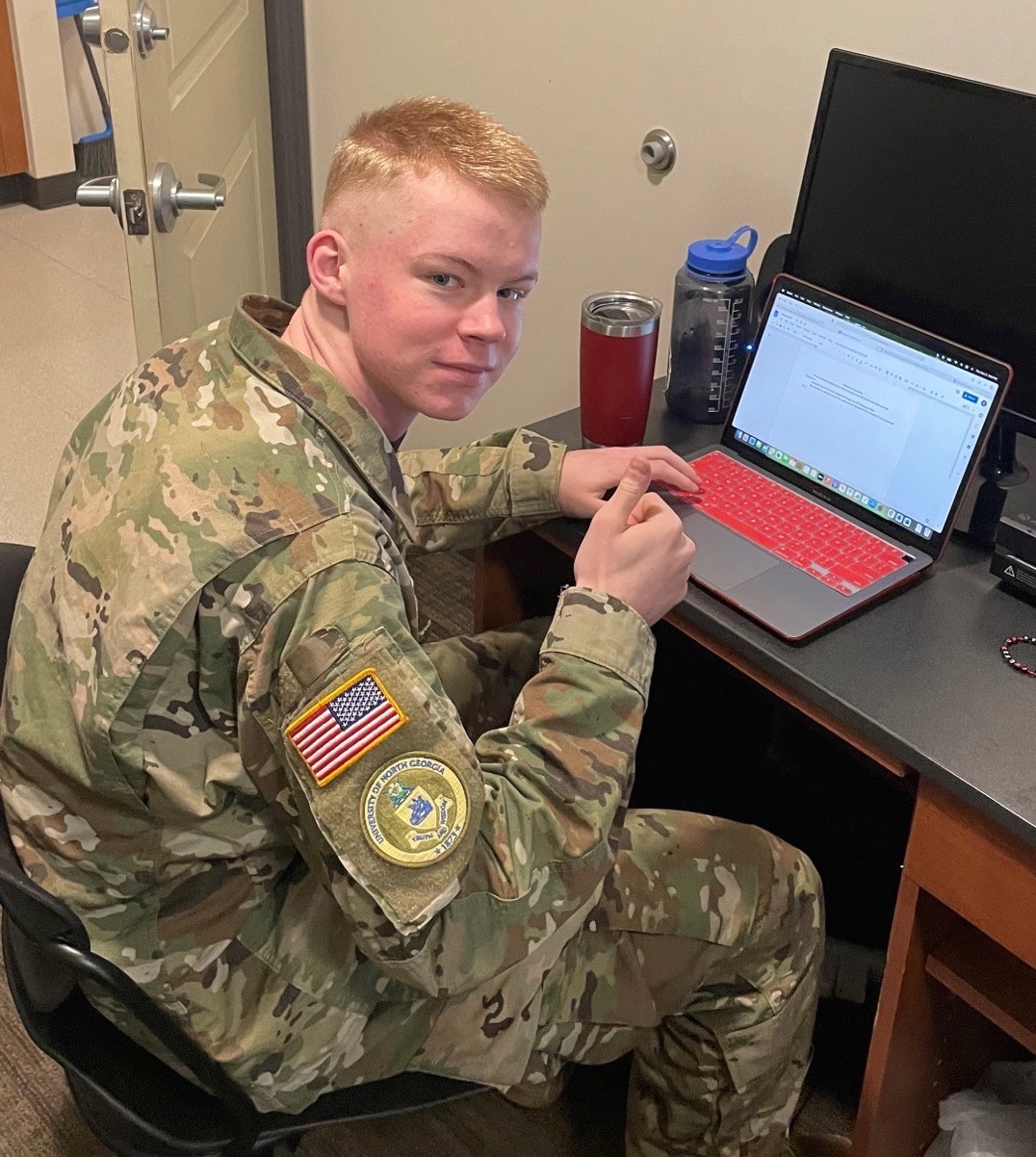Ed Nuhfer, Retired Professor of Geology and Director of Faculty Development and Director of Educational Assessment, enuhfer@earthlink.net, 208-241-5029
All of us experience the “tip of the tongue” phenomenon. This state occurs when we truly do know something, such as the name of a person, but we cannot remember the person’s name at a given moment. The feeling that we do know is a form of metacognitive awareness that confirms the existence of a real neural network appropriate to the challenge. It is also an accurate knowing that carries confidence that we can indeed retrieve the name given the right memory trigger.
In “thinking about thinking” some awareness of the connection between our psychomotor domain and our efforts to learn can be useful. The next time you encounter a tip-of-the-tongue moment, try clenching your left hand. Ruth Propper and colleagues confirmed that left hand clenching activates the right hemisphere of the brain and can enhance recall. When learning names, clenching of the right hand activates the left hemisphere and can enhance encoding (http://journals.plos.org/plosone/article?id=10.1371/journal.pone.0062474). Not all connections between the psychomotor domain and intellectual development are this direct, but it is very useful to connect efforts to develop intellectually with established ways that promote psychomotor development.
Young people are active, so many things that excite them to initiate their learning have a heavy emphasis on psychomotor development. Examples are surfing, snowboarding, dance, tennis, martial arts, yoga, or a team sport. We can also include the hand-eye coordination and learning patterns involved in many addictive video games as heavy on kinesthetic learning, even though these do not offer health benefits of endurance, strength, flexibility, balance, etc. It is rare that anyone who commits to learning any of these fails to achieve measurably increased proficiency.
K-12 teacher Larry Ferlazzo uses the act of missing a wastebasket with a paper wad to help students understand how to value error and use it to inform strategies for intellectual development (http://larryferlazzo.edublogs.org/2011/10/31/an-effective-five-minute-lesson-on-metacognition). His students begin to recognize how the transfer of practices that they already accept as valid from their experiences may likely improve their mastery in less familiar challenges during intellectual development.
College teachers also know that the most powerful paths to high-level thinking engage the psychomotor domain. Visualization that involves explaining to self by diagram and developing images of the knowledge engages psychomotor skills. Likewise, writing engages the psychomotor in developing text, tracking and explaining reasoning and in revising the work (Nuhfer, 2009, 2010 a, b).
Students already “get” that many trips down the ski trail are needed to master snowboarding; they may not “get” that writing many evaluative argument papers is necessary to master critical thinking. In the former, they learn from their most serious error and focus on correcting it first. They correctly surmise that the focused effort to correct one troublesome issue will be beneficial. In efforts to develop intellectually, students deprived of metacognitive training may not be able to recognize or prioritize their most serious errors. This state deprives them of awareness needed to do better on subsequent challenges.
It is important for educators to recognize how particular cultures engage with error. Author and neuroscientist Gerd Gigerenzer, Director of the Max Planck Institute for Human Development and the Harding Center for Risk Literacy (2014) contrasts positive and negative error cultures. A positive error culture promotes recognition and understanding of error. They discuss error openly, and sharing of experienced error is valued as a way to learn. This culture nurtures a growth mindset in which participants speak metacognitively to self in terms of: “Not yet… change this …better next time.” Gigerenzer cites aviation as a positive error culture of learning that has managed to reduce plane crashes to one in ten million flights. Interestingly, the cultures of surfing, snowboarding, dance, tennis, martial arts and yoga all promote development through positive error cultures. Positive error cultures make development through practice productive and emotionally safe.
Gigerenzer cites the American system of medical practice as one example of a negative error culture, wherein systems of reporting, discussing and learning from serious errors are nearly nonexistent. Contrast aviation safety with the World Heath Organization report that technologically advanced hospitals harm about 10% of their patients. James (2013) deduced that hospital error likely causes over 400,000 deaths annually (http://journals.lww.com/journalpatientsafety/Fulltext/2013/09000/A_New,_Evidence_based_Estimate_of_Patient_Harms.2.aspx). Negative error cultures make it unsafe to discuss or to admit to error and therefore, they are ineffective learning organizations. In negative error cultures, error discovery results in punishment. Negative error cultures nurture fear and humiliation and thereby make learning unsafe. Error there delivers the metacognitive declaration, “I failed.”
We should think in what ways our actions in higher education support positive or negative error cultures and what kinds of metacognitive conversations we nurture in participants (colleagues, students) of the culture. We can often improve intellectual development through understanding how the positive error cultures promote psychomotor development.
References
Gigerenzer, G. (2014) Risk Savvy: How to Make Good Decisions. New York New York: Penguin.
Nuhfer, E.B. (2009) “A Fractal Thinker Designs Deep Learning Exercises: Learning through Languaging. Educating in Fractal Patterns XXVIII, Part 2.” The National Teaching & Learning Forum, Vol. 19, No. 1, pp. 8-11.
Nuhfer, E.B. (2010a) “A Fractal Thinker Designs Deep Learning Exercises: Acts of Writing as “Gully Washers”- Educating in Fractal Patterns XXVIII, Part 3.” The National Teaching & Learning Forum, Vol. 19, No. 3, pp. 8-11.
Nuhfer, E.B. (2010b) “A Fractal Thinker Designs Deep Learning Exercises: Metacognitive Reflection with a Rubric Wrap Up – Educating in Fractal Patterns XXVIII, Part 4.” The National Teaching & Learning Forum, Vol. 19, No. 4, pp. 8-11.


